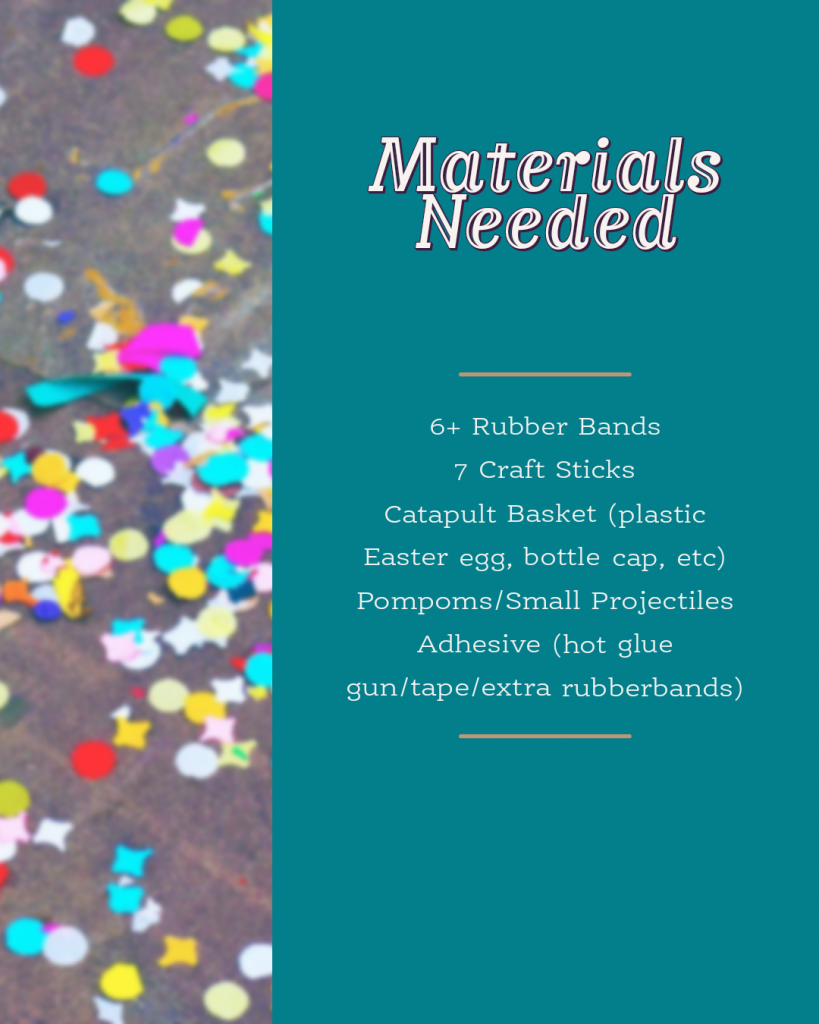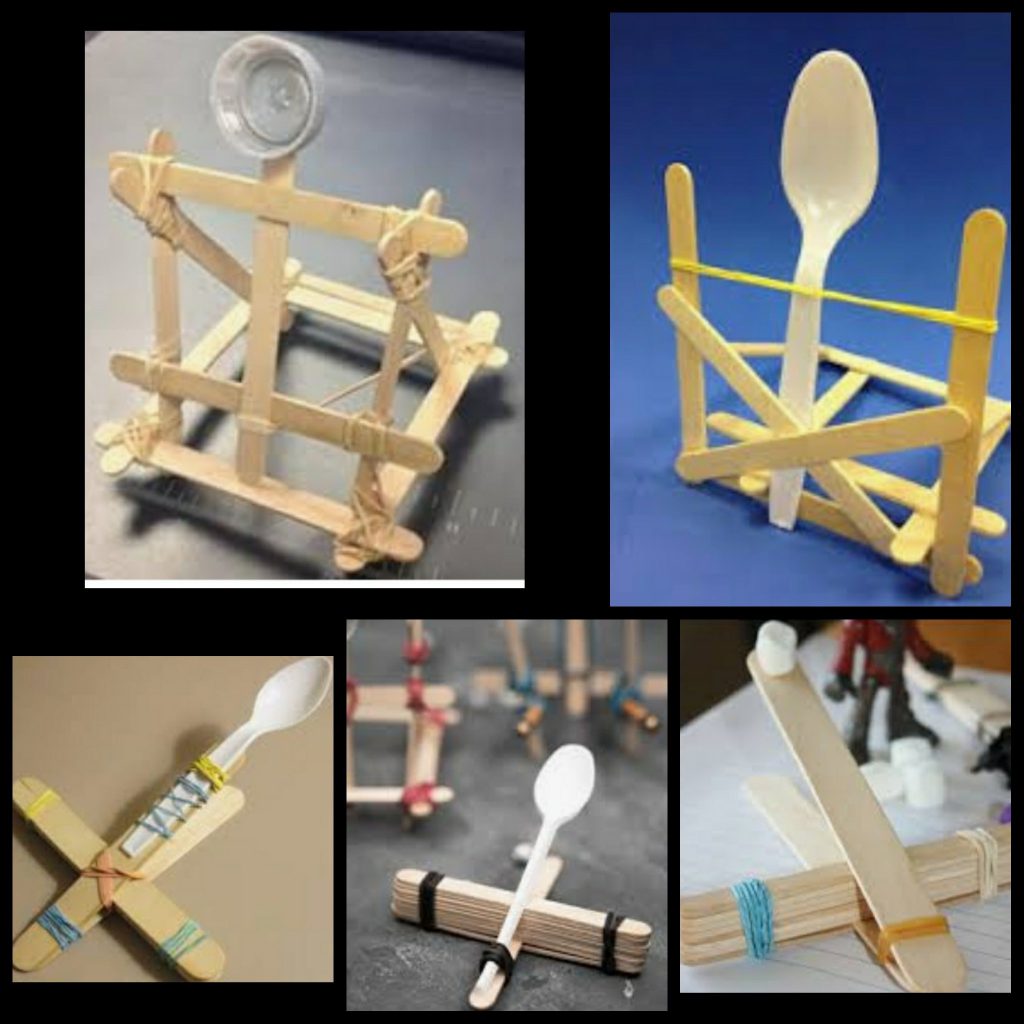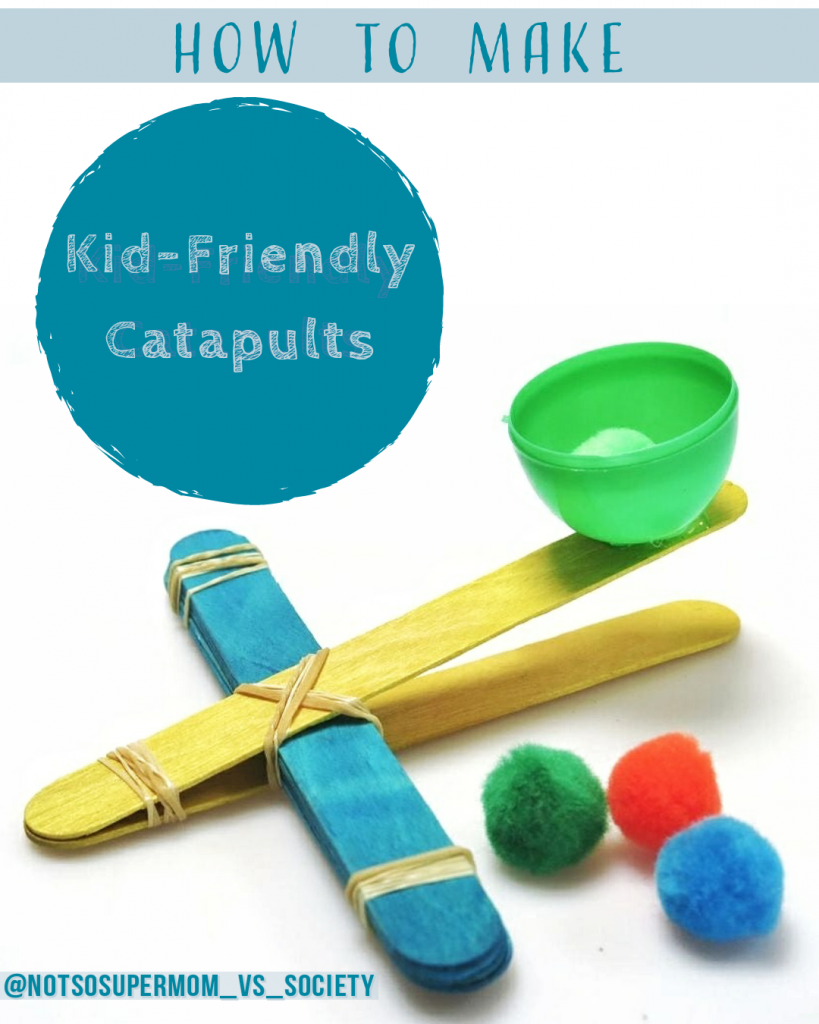
Today’s activity is a fun kid-friendly engineering challenge. There are a lot of cool DIY models, but I chose this one because Easter is coming soon and using a plastic Easter egg is timely.
Both boys loved the catapults (and marshmallow snack!) and played with them for a good 45ish minutes. What’s also really cool about this activity is that you can make it simple enough for a toddler to understand or complex enough that a teenager benefit from it.
Instructions:

- Make a stack of popsicle sticks by stacking them one on top of each other. Start with five (5) sticks. Optional: paint or color the popsicle sticks before starting.
- Wrap a rubber band around each end of the stack to hold the stack together.
- Take two popsicle sticks and stack them together. Wrap one rubber band around one end of these two sticks to hold them together.
- Pull the two popsicle sticks slightly apart and place the larger stack of sticks in between the two.
- Attach the larger stack to the stick on the top using a rubber band.
- Place a dollop of hot glue on the upper part of the launcher stick.
- Set the half of a plastic Easter egg (cup side up) on the hot glue.
- Place a pom pom in the basket.
- Hold the catapult with one hand and use your other hand to pull down on the egg. Release and watch the pom pom launch! Where will the pom pom go? How far will it go?
- Record your observations. Measure the distance the pom pom traveled. What might make a difference in how far it travels?
- Try building the catapult with more popsicle sticks and other designs. Try launching other projectiles, such as marshmallows. What do you think will happen? Which design/projectile is best?
Catapult Science
Catapults are super fun and educational. You use engineering to construct the catapult and science to test how well various objects and designs work (speed/distance/weight/etc). You use technology to assist in building and math to determine the supplies you need.
First recorded in ancient Greece around 399, B.C., catapults were used in battle to defeat walls and attack settlements, but in modern times we can use them for something else! Catapults are very useful in teaching STEM concepts, particularly Newton’s 3 Laws of Motion – An object at rest stays at rest unless acted upon by an outside force; force is equal to the change in momentum per change in time, and for every action, there is an equal and opposite reaction. How can you see some of these laws in action with the catapult?
Playing with the catapult also provides an opportunity to observe gravity, kinetic energy, and potential energy.
More Catapult Designs
Explore physics and how catapults work with other design ideas including:
- LEGO catapult
- Jumbo marshmallow catapult.
- Pencil catapult for great STEM with a handful of school supplies).
- Spoon catapult with great firing power!



Excellent site. A lot of useful information here. I’m sending it to some buddies ans also sharing in delicious. And naturally, thanks to your sweat!|
I have been looking everywhere for this! You’ve made my day! Thx again. Interesting content. I truly appreciate this post.